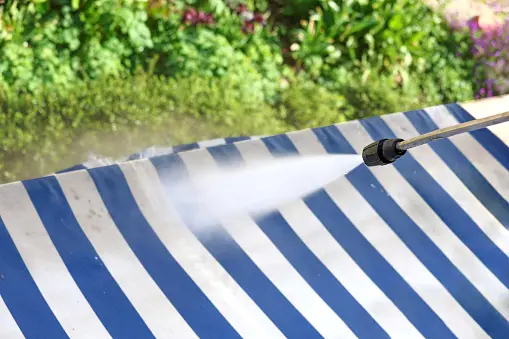Shrubs are the backbone of many landscapes, providing structure, color, and texture year-round. However, to keep them looking their best, regular maintenance is essential. Proper trimming not only enhances their aesthetic appeal but also promotes healthy growth. In this comprehensive guide, we’ll explore tips and techniques for shrub trimming that will help you achieve a beautiful landscape.
Understanding the Importance of Shrub Trimming
Shrub trimming serves multiple purposes, all of which contribute to the overall health and appearance of your landscape:Promoting Growth: Trimming stimulates new growth by removing dead or overgrown branches, allowing sunlight and air to reach the inner parts of the shrub.Maintaining Shape and Size: Regular trimming helps control the size and shape of shrubs, preventing them from outgrowing their allotted space and maintaining a neat appearance. Enhancing Aesthetic Appeal: Well-trimmed shrubs add beauty and visual interest to your landscape, creating focal points and enhancing curb appeal.
Shrub trimming is more than just a cosmetic practice; it’s a fundamental aspect of landscape maintenance with far-reaching benefits. Firstly, trimming promotes healthy growth by removing dead or overgrown branches, allowing sunlight and air to penetrate the shrub’s interior. This stimulates new growth and prevents the spread of diseases and pests.
Moreover, regular trimming helps maintain the shape and structure of shrubs, preventing them from becoming overgrown and unruly. By shaping shrubs according to their natural growth patterns, trimming enhances the overall aesthetic appeal of the landscape, creating a polished and well-maintained look.
Additionally, proper trimming contributes to the longevity of shrubs, ensuring they remain a vibrant and integral part of the landscape for years to come. Whether it’s defining property borders, providing privacy, or adding visual interest, well-trimmed shrubs play a crucial role in enhancing the curb appeal and value of any property. Thus, understanding the importance of shrub trimming is essential for anyone looking to create and maintain a beautiful outdoor space.
Essential Tools for Shrub Trimming
Before you begin trimming your shrubs, it’s important to have the right tools on hand:
Pruning Shears: Ideal for trimming small branches and shaping shrubs with precision.
Hedge Trimmers: Electric or manual trimmers designed for larger shrubs and hedges.
Loppers: Used for cutting thicker branches that pruning shears can’t handle.
Hand Saw: For cutting large or woody branches.
Techniques for Shrub Trimming
Now that you have the necessary tools, let’s delve into the techniques for effective shrub trimming: Start with a Plan: Before you make any cuts, step back and assess the shrub’s natural shape and growth pattern. Identify any areas that need shaping or thinning out.
Remove Dead or Diseased Branches: Begin by pruning away any dead, diseased, or damaged branches. Make clean cuts at a 45-degree angle just above a healthy bud or branch junction.
When it comes to trimming shrubs, dealing with larger or woody branches requires the right tool for the job. A hand saw is indispensable in this regard, offering the strength and precision needed to handle thicker growth. Unlike pruning shears or hedge trimmers, which are suitable for smaller branches, a hand saw provides the necessary cutting power for larger tasks.
Using a hand saw effectively requires proper technique. Before making any cuts, it’s essential to assess the branch you intend to remove, considering any obstacles or potential hazards. When making the cut, aim for a clean slice at a slight angle just outside the branch collar—the area where the branch meets the trunk or main stem. This technique encourages faster healing and reduces the risk of disease or pest infestation.
Smooth and steady strokes are key when using a hand saw. Start with shallow cuts to establish a groove before gradually increasing pressure to complete the cut. By mastering these techniques, you can confidently tackle larger branches during shrub trimming, ensuring a neat and well-maintained landscape.
Thin Out Overcrowded Branches: To improve airflow and sunlight penetration, selectively prune out overcrowded branches, focusing on crossing or inward-growing ones. This opens up the interior of the shrub and promotes healthy growth.
Shape the Shrub: Use pruning shears or hedge trimmers to shape the shrub according to your desired aesthetic. Trim along the natural contours of the plant, stepping back occasionally to assess your progress and ensure symmetry.
Maintain Proportions: When trimming, aim to maintain the natural proportions of the shrub. Avoid over-pruning, which can weaken the plant and lead to sparse growth.
Consider Seasonal Timing: While light pruning can be done at any time of year, major shaping should be done during the dormant season for most shrubs, typically late winter or early spring. Avoid pruning in late summer or fall, as this can stimulate new growth that may be damaged by frost.
Tips for Successful Shrub Trimming
In addition to the techniques mentioned above, consider the following tips for successful shrub trimming:
Regular Maintenance: Schedule regular trimming sessions to keep your shrubs looking their best. Light pruning throughout the year can help minimize the need for heavy pruning later on.
Avoid Over-Pruning: While it’s important to remove dead or overgrown branches, avoid excessive pruning, as this can stress the plant and diminish its overall health.
Use Sharp Tools: Sharp pruning tools make clean cuts and minimize damage to the shrub. Regularly sharpen blades and clean tools after each use to prevent the spread of disease.
Step Back and Assess: Periodically step back to evaluate your progress and ensure you’re achieving the desired shape and balance.
Conclusion:
Proper Shrub Trimming Services In Adelaide are essential for maintaining a beautiful and healthy landscape. By understanding the importance of trimming, using the right tools, employing effective techniques, and following these tips, you can keep your shrubs thriving year-round. Whether you’re shaping hedges, accentuating focal points, or simply enhancing curb appeal, regular maintenance will ensure your landscape remains a source of pride and beauty.



